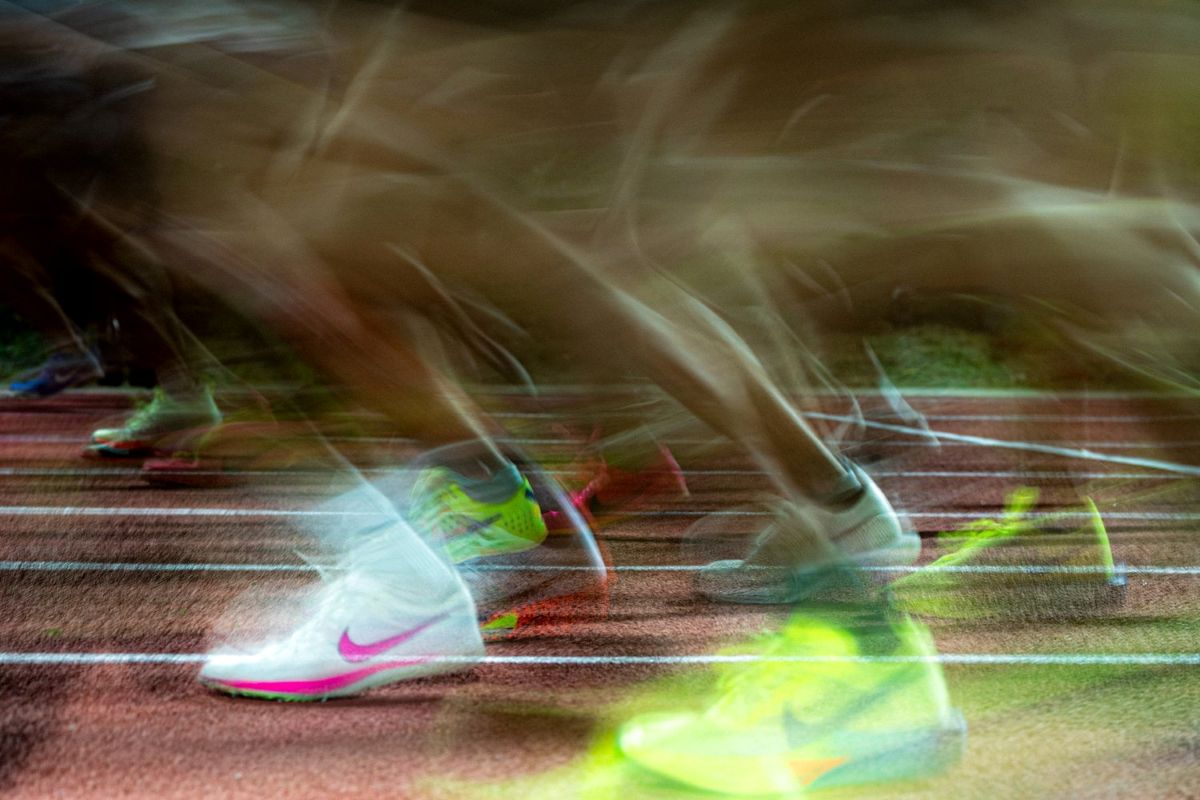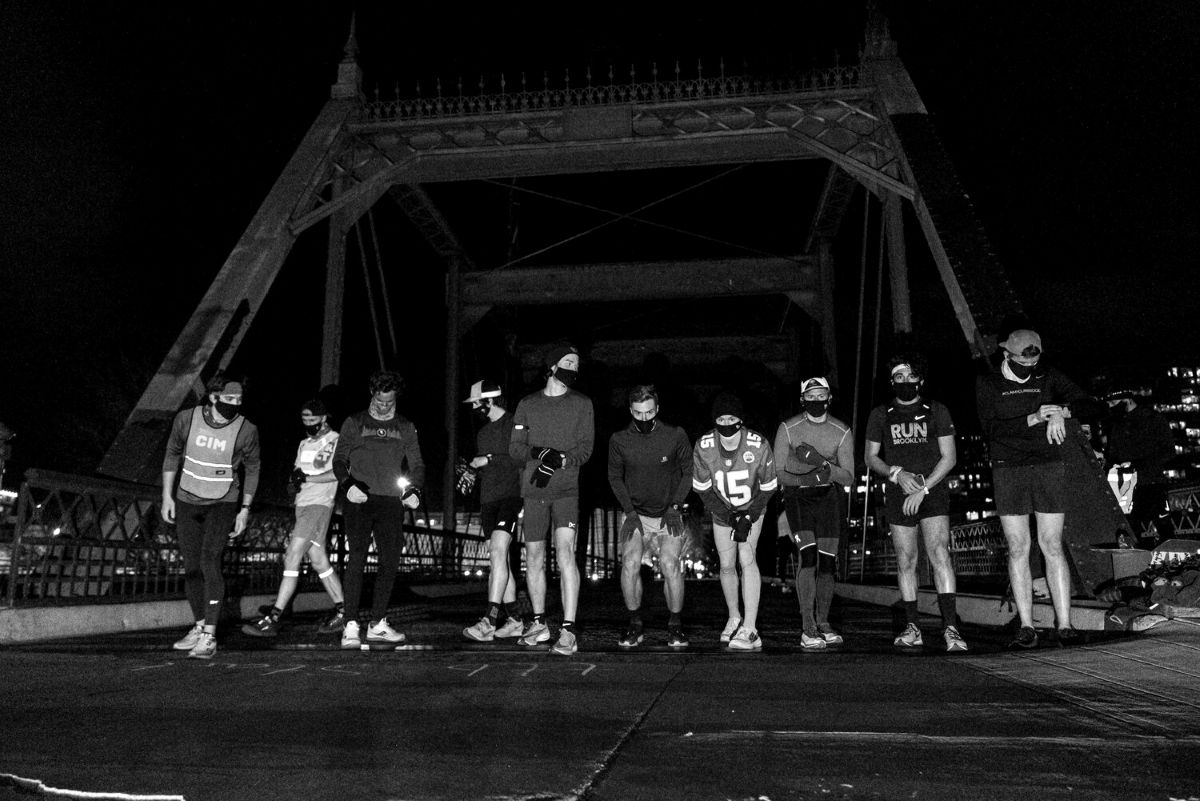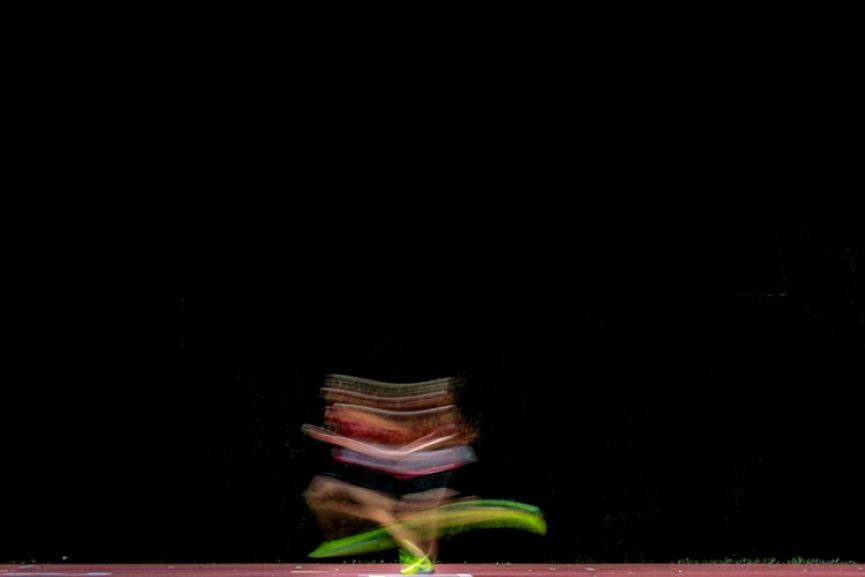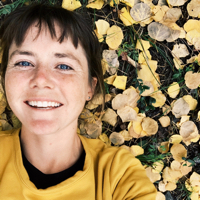Meet Matt Trappe. Undoubtedly, you have either heard about him or seen his work in the running world. Known for his filmmaking, Matt loves to showcase and bring to light the passion and people of running. As a creative director and brand marketer, he has contributed to hundreds of creative projects and knows a thing or two about what works, and what doesn’t. His recent Substack, “A Matter of Brand,” provides an interesting critique of the marketing side of ultrarunning and digs into the storytelling of brands, examining the nuances of our niche world. And speaking of niche, he even recently started his own brand, Auteur Sportif, that blends running and art. Here’s a look into the mind of Matt Trappe.
Tell us a little about yourself and your background. When/how did art and filmmaking enter your life and where did the niche in running start?
I was a soccer player my whole life and didn’t call myself a runner until my late 20s. I was living in Chicago, nowhere near a trail, and yet I fell in love with trail running from afar, thanks to the internet and “Outside Magazine.” I was working in marketing at a biotech startup and had been shooting photos as a hobby since grad school. Instagram was starting to explode, and I saw an opportunity to combine running and photography into a business. When that startup was acquired, the time was right to go deeper. My wife, daughter, and I packed up and moved from Chicago to Denver. I showed up at the 2012 Hardrock 100 with a camera in hand and figured the rest out from there.
Do you think of running as a creative outlet? How does running influence your creativity and vice versa?
Running is by far my biggest creative outlet and mental reset. The physical benefits are great, but the most powerful benefit of a running lifestyle is the mental clarity and freedom of thought that comes with it. My best ideas come to me during a run. The synergy between mind and body quiets the noise and connects ideas on another level. I’m the most energized creatively when I’m running regularly. Running is a wildly expressive and creative endeavor, and the current running boom shows the world is picking up on that.
What has been your favorite project you’ve worked on? And have you anything exciting in the pipeline?
I have a really hard time picking a singular favorite project. In general, I’m the most excited by creative projects where I’m involved early in the creative process — whether that is a documentary film or a brand campaign doesn’t matter too much, both can be equally exciting for me.
At the moment I’m wrapping up a project for Hoka/UTMB around the Western States 100 and am planning the next project, which takes me to Italy for Diadora.
What is Auteur Sportif?
Auteur Sportif is a lifestyle running brand. I created the brand in 2024 around the idea that so many of us run for reasons far beyond performance, yet most brands in running differentiate their products solely on performance characteristics — all of the messaging and storytelling is hyper-focused on faster, faster, faster. I think that’s missing a massive number of runners by speaking to them in the wrong way.
Auteur Sportif is my long-term side project for now. It’s a medium to storytell with outlets beyond just photo and video. I’ve worked alongside creative and marketing teams at various brands and agencies for over 13 years and I’ve learned a lot about what works and doesn’t and what speaks to me the most. The next step in my career will involve leading a brand and Auteur Sportif is my way to get that ball rolling, to iterate and to learn.
If you could see anything change or give any key advice to some of the bigger brands, what would it be?
The Matter of Brand newsletter speaks to what I mentioned earlier about having seen so much in the creative world, especially around running. I’ve worked with many brands, races, agencies, and athletes that patterns have started to emerge. I feel I have a lot more to say and contribute that a photo or video can’t enable me to express effectively. Writing, like running, is a great way to clarify thoughts and ideas. So I started writing publicly.
In general, I see brands succeed by being a part of the community and having their own point of view. When senior leadership really understands and participates in trail/ultrarunning, they can better enable their teams to reach the community. The bigger a brand is, the tougher that becomes. Ideas become so sterilized through bureaucracy and risk-averse corporate culture that it leads to disingenuous, contrived, and bland storytelling. That’s a reason we see small brands having so much success. It’s an overused buzzword, but it comes back to authenticity and being there because you want to be, not solely because you have to sell something to hit a quarterly goal. That switch flips somewhere along the growth path from a small to a large brand.
Who has been influential in your life and/or who inspires you as a creative and as a runner?
I didn’t grow up with any creative role models or muses. Other than maybe a painter or a writer, I had no awareness of the wide range of applications creativity has in the world. As a kid, I’d draw and take photos all the time, but that side of my brain was never given credence by the external world of my youth. Travel cracked open that side of my mind, and to this day, my cup is filled by interaction with new places, people, and cultures. Traveling puts me in situations where I feel vulnerable and unfamiliar, yet relying on my senses and intuition always empowers me to sort through the ambiguity. That gave me confidence to trust and pursue my own ideas in the face of the unknown, because I know I can figure it out.
Rick Rubin’s recent book, “The Creative Act,” really captures the perspective I’ve found within myself where there’s no “right way” to do something other than following your own curiosity and intuition and to always ask “what if?” That mindset connects so well with ultrarunning as well.
As a runner, I am inspired by my dad who always ran regularly while I was growing up. He ran 10-kilometer races and would escape to train early in the morning on the weekend. He really enjoyed running as a practice. As I got older, I came to really empathize with the value of that outlet.
Do you think there is a purpose to art and to running? Why do either?
That’s a deep one and probably fairly personal for anyone to answer. I can only speak for myself, but art and running represent the freedom to express myself both mentally and physically. They are similar acts of rebellion against stasis, or the status quo, in a world that would very much prefer we conform. That is deeply fulfilling for me, and not only does it give me purpose, but, getting super deep, I think is really what makes us human.
If you could give any advice to your younger self, what would it be?
Have ideas. Have a point of view. Explore it, express it, and go for it. Don’t give a f* about what others think. If there is a clear answer for something, it is no longer interesting. Ask questions.
What is one thing that gives you hope these days?
My kids. They are so curious, empathetic, caring, and creative. While the rigors of life may try to harden our exterior and bury those instincts, we all start from this beautiful place.
And the last question that I ask everyone. If you could be a tree, what kind of tree would you be? And why?
A maple tree. When I was a kid, my grandpa decided he wanted to make maple syrup by tapping the various maple trees in our backyard. I was enlisted very much against my will to help. Every day, I had to empty the sap bags from a handful of trees around our property. Then we would periodically distill the sap into syrup on an outdoor wood-burning stove setup he’d built from an old metal barrel. It was early spring and freezing cold. I hated it. But those maple trees were amazing in that the sap would run down to the roots at night to gather nutrients and then rise up to the branches during the day to grow and nourish the leaves. The rhythm of it was really cool, and the sheer volume of sap that one tree could give off was incredible. Yet the tree was totally unfazed by our tap.
That may be a trait of all trees at that time of year, but the experience will always connect me to maple trees. They focus all of their energy to gather the nutrients they need and then, in a full-out effort, literally lift those resources from the ground to create anew for themselves.
Call for Comments
- Are you familiar with Matt Trappe? What do you love about his work?
- What kind of tree would you be and why?



